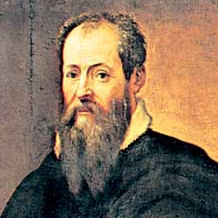No, silly, there was no system for members of the public to log in and rate everything they had ever experienced, from restaurants to acupuncturists. There was no such democratic forum in the 16th century, but there were critics - drama critics, literary critics, art critics - and the things they wrote mattered to people. Unlike present-day critics, however, they were often active participants in the arts which they discussed in their writings. And they didn't focus their attention on a specific book or play or work of art. Instead, it was all about theory.
The greatest literary theorist of the Classical world was Aristotle, and once his Poetics had been translated into Latin in 1498, European literary theory constantly referred back to it.
In Aristotle's view - at least as interpreted by Renaissance scholars - all drama had to abide by the Three Unities: unity of action - almost complete focus on one main plot element; unity of time - all action to occur within a 24-hour period; and unity of place - all action to occur at the same location. It's easy to see at a glance how constraining it would be for a playwright to have to follow those rules, and yet the 16th century was an age of Neoclassicism, and the notion of rejecting the Unities seemed like heresy to many intellectuals.
One hot topic during the 16th century was the purpose of poetry (which basically included fiction in any form). Julius Caesar Scaliger (1484-1558) exalted classical Roman authors (ironically in keeping with his first and middle names), and rejected any modern innovations that aimed to improve on what Scaliger considered perfection. He also held the mainstream belief that poetry must serve a moral, didactic purpose. This view was in direct contradiction to that of Luigi Castelvetro (1505-71), who wrote that the aim of poetry should be to keep the common people happy. A completely different third view was voiced by the Englishman Sir Philip Sidney in his Defence of Poesy (published posthumously in 1595), in which he argued that the poet exists separately from society and is a creator of a new and variant form of nature.
When it came to 16th century art criticism, one figure towers above all others.
Giorgio Vasari (1511-74) was an Italian artist, architect, and most importantly, author of a masterwork: Lives of the Most Eminent Painters, Sculptors and Architects (1650-52). This book earned him his reputation as the father of art history. Vasari did not just present the biographies of artists; he also rated three periods of Western artistic development: the Classical (top-notch); the Dark Ages (the pits); and the Renaissance (a return to former glory). Vasari was a juicy biographer, who didn't mind filling in gaps in his knowledge of individual artists with gossip and innuendo, but he was also a first-class theorist, and his views have influenced the study of art history right up to the present day.
Maybe none of these people sound much like what we 21st-century folks tend to think of as critics, but the world has changed a lot since then, and the profession of criticism has changed along with it. It's been a 500-year-long road, but trust me - it leads directly to Yelp.


Everyone's a critic these days. At one time you had to be somewhat respective in an area...a restaurant critic would be an expert in food, for instance. Now anyone with a wallet can review restaurants, books, movies, whatever. That just makes it hard to know what to believe.
ReplyDeleteAgreed, Stephanie! I do use Yelp occasionally but I try to account for the wild-card factor by ignoring the best and worst reviews (the ones written by the guy's mother and by the world's biggest crank) and trying to average it out.
DeleteNo 16th century Goodreads? :)
ReplyDeleteYvonne V
Not that I could find, Yvonne! Of course, no matter how much I read about the 16th century, there's still so much I don't know. Maybe for Mother's Day I'll get a time capsule...
DeleteWould this one be okay?
Deletehttp://www.heritagetimecapsules.com/collections/all/products/x-large-stainless-steel
Nate, you're a genius! And it means so much to me that you would spend almost $3,000 buying me a time capsule! You're truly a son in a million. XXXXXXX
DeleteThe classical musicians like Mozart and Beethoven were highly competitive. Lots of ego to go around. Lots of squabbles. And artist like Michelangelo and the Pope...all kinds of politics there as well.
ReplyDeleteCD Coffelt at UnicornBell
It's just me...catching up. The profession of criticism hasn't changed for the better it seems, the louder the voice and the deeper the pockets the more the critique is heard regardless of its merits...
ReplyDeleteYour visits are always very welcome! I wonder whether you know this old adage: "Those that can, do; those that can't, teach; and those that can't teach become critics."
ReplyDelete